What is a Cable Railing System for Decks and How to Choose the Best One
When it comes to enhancing the safety and aesthetics of your outdoor space, "cable railing systems for decks" have emerged as a popular choice among homeowners and builders alike. These innovative systems offer unobstructed views while providing the necessary support and safety for deck areas. According to industry expert John Smith, a renowned designer with years of experience in outdoor structures, “Cable railing systems not only add a modern touch to your deck but also ensure durability and safety for your family and guests.”
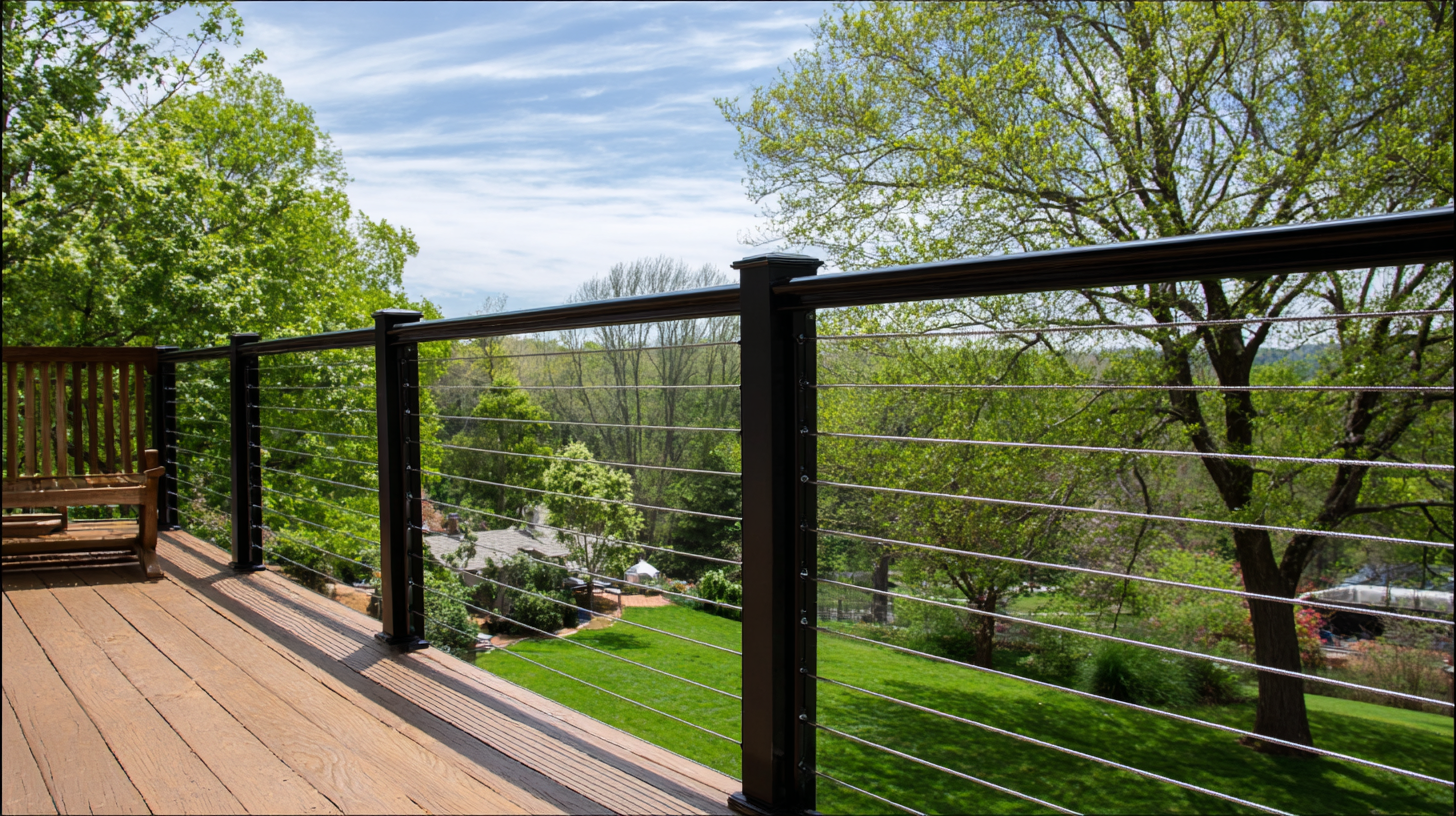
Choosing the right cable railing system for your deck involves considering various factors such as materials, design, and installation methods. With the vast array of options available, it is crucial to understand what makes each product unique. John Smith emphasizes the importance of selecting high-quality materials, stating, “The longevity of cable railings depends significantly on the materials used; investing in quality ensures your deck remains safe and visually appealing for years to come.”
In this guide, we will delve into the essential components of cable railing systems for decks and provide insights on how to choose the best option for your needs. By understanding the key elements and following expert advice, homeowners can create a stunning and secure outdoor environment.
Understanding Cable Railing Systems: Definition and Key Features
Cable railing systems are an innovative solution for decks, providing a modern and unobtrusive way to enhance safety while maintaining unobstructed views. These systems typically consist of stainless steel cables strung between posts, offering a sleek, contemporary aesthetic that complements various architectural styles. One of the key features of cable railings is their durability; they are designed to endure the elements, making them suitable for both indoor and outdoor settings. Additionally, the thin cables allow for ample visibility, which is particularly advantageous when overlooking scenic landscapes.
When choosing a cable railing system, several factors should be considered. First, the type of materials is crucial; opting for stainless steel cables and powder-coated aluminum posts can ensure longevity and resistance to corrosion. Secondly, the spacing and diameter of the cables must comply with local safety codes, particularly if children or pets are a factor. Finally, customization options, such as different post colors and cable finishes, can help homeowners achieve the desired look while maximizing functionality. By understanding these definitions and key features, homeowners can make informed decisions that best suit their needs and aesthetic preferences.
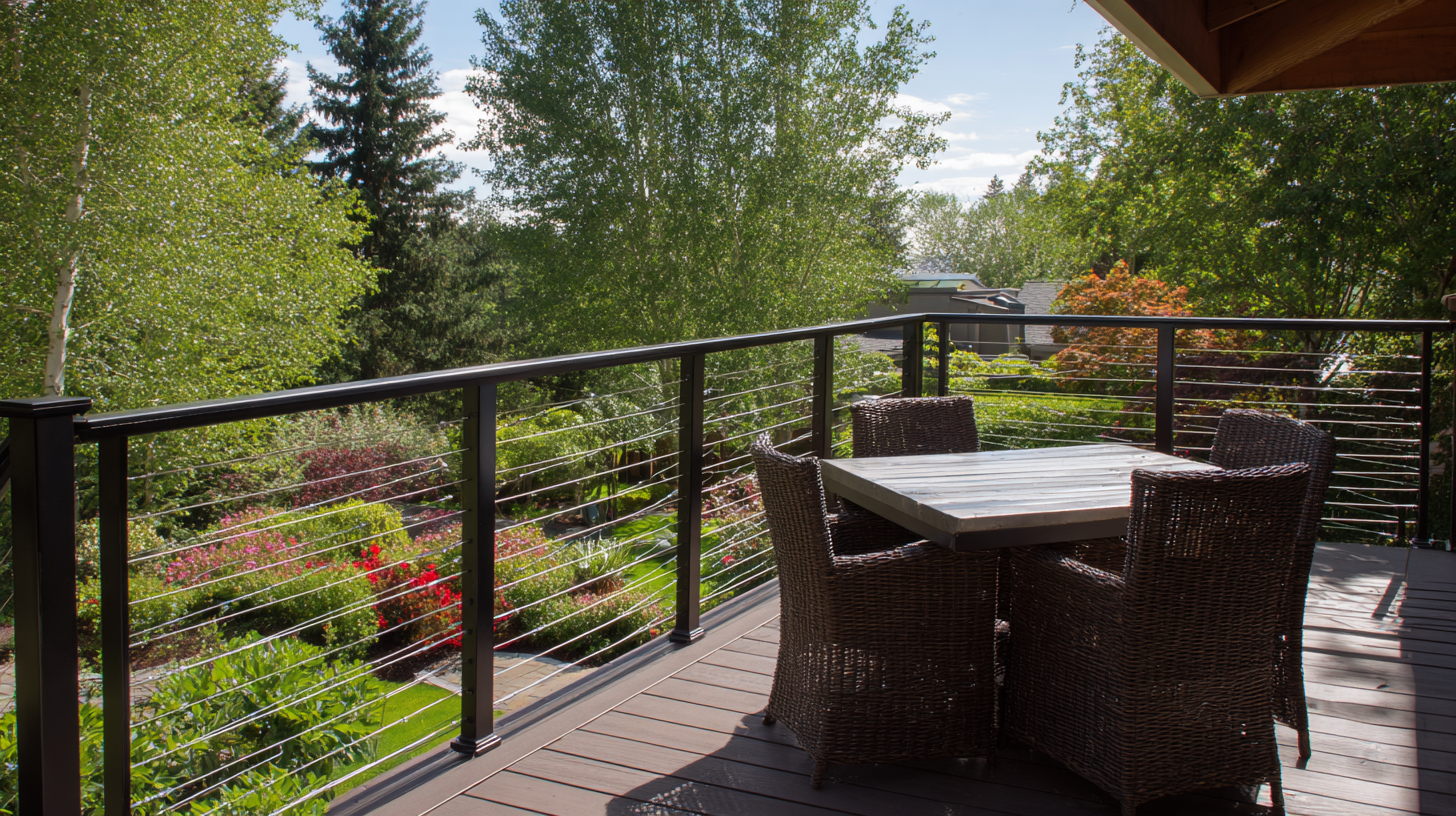
Benefits of Installing Cable Railing on Your Deck
Installing a cable railing system on your deck offers several compelling benefits that enhance both aesthetics and safety. According to the International Code Council, cable railings can provide improved visibility without compromising structural integrity, making them an ideal choice for decks overlooking scenic views. The minimalist design of cable railings allows for uninterrupted sightlines, which is especially desirable for homeowners looking to maximize their enjoyment of outdoor spaces. Additionally, a study by the American Institute of Steel Construction revealed that cable railings can reduce perceived visual clutter by 30%, creating a more open and inviting atmosphere.
Safety is another significant advantage of cable railings. The National Fire Protection Association indicates that well-installed cable railings can maintain the same level of safety as traditional railings while using less material. This means homeowners can achieve compliance with safety codes while opting for a more modern look. Furthermore, cable railings are typically made from durable materials like stainless steel, which can withstand harsh weather conditions, that are backed by warranties extending up to 10 years. This durability not only ensures long-lasting performance but also reduces maintenance costs over time, offering a smart investment for any deck owner.
Benefits of Installing Cable Railing on Your Deck
Factors to Consider When Choosing a Cable Railing System
When selecting a cable railing system for decks, several key factors can influence your decision. First, consider the material of the cables and posts. Stainless steel is popular for its durability and resistance to rust, making it ideal for outdoor use. Additionally, think about the aesthetics of the system. You want a design that complements your deck and enhances the overall look of your home.
**Tips:** Always measure your deck area accurately to determine the appropriate height and spacing for your cable railing system. This will ensure maximum safety while maintaining a sleek appearance.
Don't overlook local building codes and regulations when choosing a cable railing system. Compliance is essential, as it not only affects safety but also impacts the resale value of your property. Finally, consider maintenance requirements. Low-maintenance systems are preferable for busy homeowners, but ensure they are also easy to clean and resistant to various weather conditions.
**Tips:** Opt for cable railing systems with protective coatings to reduce maintenance needs and prolong their lifespan. Regular inspections can help catch any issues early, ensuring your railing system remains secure and effective over time.
| Feature | Description | Pros | Cons | Price Range |
|---|---|---|---|---|
| Material | Typically stainless steel or aluminum for durability and corrosion resistance. | Durable, low maintenance, modern aesthetic. | Cost can be higher than traditional railing materials. | $30 - $100 per linear foot |
| Cable Diameter | Commonly ranges from 1/8-inch to 3/16-inch. | Strong enough for safety, while maintaining visibility. | Thicker cables can obstruct views. | N/A |
| Post Spacing | Typically, 4 to 6 feet apart depending on local building codes. | Allows open views while ensuring safety and compliance. | May require additional posts for certain designs. | N/A |
| Installation Type | Can be top-mounted or side-mounted depending on the structure. | Flexible design options available. | Installation complexity can vary. | $50 - $200 for installation |
| Code Compliance | Must adhere to local codes regarding height and strength. | Ensures safety and property value. | Variances in codes can cause confusion. | N/A |
Materials and Durability: Selecting the Right Cable Railing
When selecting a cable railing system for your deck, the choice of materials significantly affects both durability and aesthetics. According to the American Architectural Manufacturers Association (AAMA), stainless steel is the most recommended material for cable railings due to its resistance to corrosion and rust, making it ideal for outdoor applications. AAMA reports that stainless steel cable railings can last over 15 years with minimal maintenance, compared to other materials like wood or vinyl, which may require more frequent replacement.
Another critical factor in durability is the type of cable used. Marine-grade stainless steel cables, which contain higher levels of nickel and molybdenum, offer superior strength and resistance to harsh weather conditions, as highlighted in a report by the American Society for Testing and Materials (ASTM). These cables can withstand extreme temperatures and UV exposure, providing a long-lasting solution for deck safety without compromising views. When choosing the best cable railing system, prioritize materials that not only meet aesthetic preferences but also comply with industry standards for strength and durability.
Installation Tips for a Successful Cable Railing Setup
When installing a cable railing system for decks, careful planning and precise execution are critical for a successful setup. First, measure the area accurately to determine the required length of cable and spacing for posts. It's crucial to select high-quality materials that can withstand the elements while ensuring safety and aesthetic appeal. For instance, stainless steel cables are popular due to their durability and resistance to rust.
Once measurements are taken and materials selected, proper installation techniques come into play. Begin by securely anchoring the posts at measured intervals along the deck’s edge. Install the cable terminals according to the manufacturer's instructions, ensuring they are tightened adequately to avoid any sagging. Remember to use a level during installation to maintain alignment and ensure a professional look. Regular checks should be scheduled to maintain tension and inspect for wear, ensuring both safety and longevity of the cable railing system.
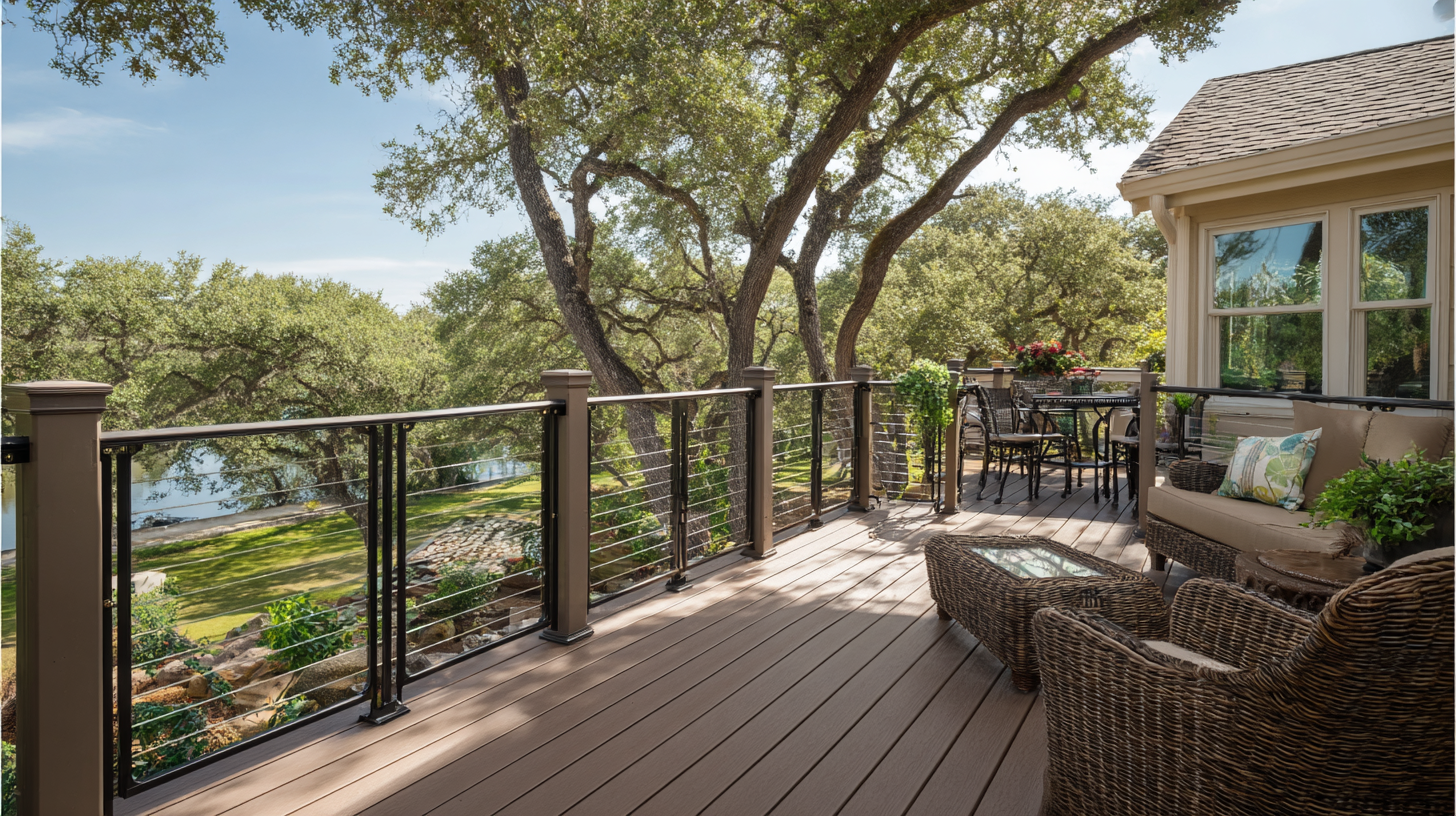
Related Posts
-
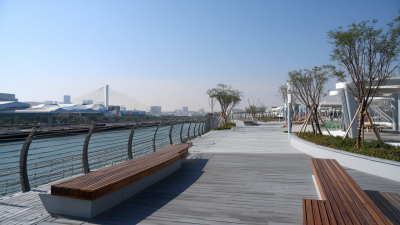
Exploring Cable Railing Innovations at the 138th Canton Fair 2025 in China
-

Exploring Growth Opportunities for Stainless Steel Cable Railing Systems at the 138th Canton Fair 2025
-

Transform Your Space with Stylish Cable Railing Kits for Modern Home Designs
-

Exploring the Benefits and Design Options of Modern Cable Railing Systems for Homes
-
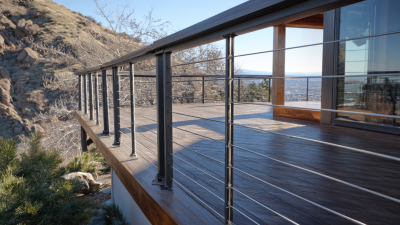
Why Metal Cable Railings are the Future of Modern Outdoor Design: A Comprehensive Guide
-
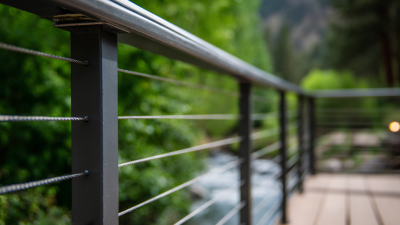
Transforming Spaces: The Ultimate Guide to Cable Handrail System Designs and Installations